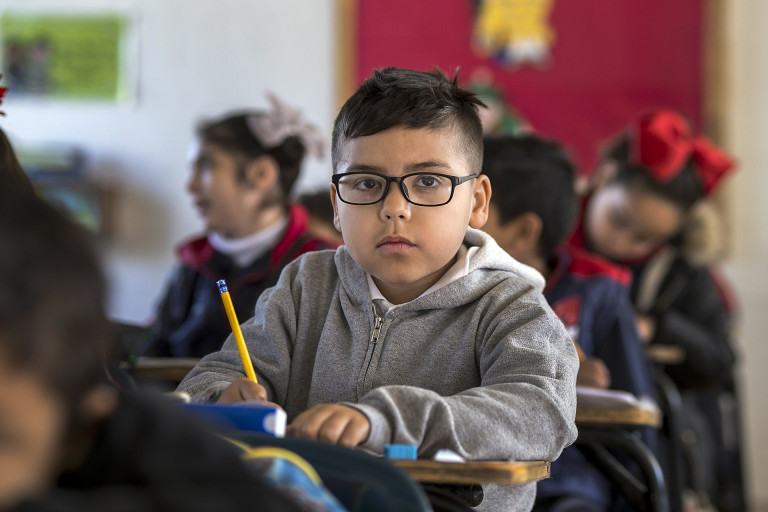Amir’s Story: Misunderstood and Struggling
Amir, an 11-year-old with a quick mind and a vivid imagination, struggled in school. Reading felt like climbing a mountain, and he frequently reversed letters in his writing. His teachers saw the mistakes but didn’t dig deeper. In fact, Amir’s class teacher commented to his parents at a parents-teachers’ meeting that, “If the rest of the class can understand what I teach, why can’t he?” Amir’s parents couldn’t see why Amir had difficulty in reading, writing and calculating, they assumed he wasn’t trying his best.
Hoping to “fix” the problem, they scolded Amir for “not trying hard enough”. He was grounded when his grades slipped, and words like “lazy” or “careless” became part of daily conversations. Over time, Amir began to believe these labels, even though he knew he was trying his best. The constant criticism crushed his confidence, and he started to withdraw from friends, family, and activities he once loved.
When a psychologist finally diagnosed Amir with dyslexia, his parents realized their harsh approach had done far more harm than good. It turned out that Amir also had dyscalculia, which makes it challenging for him to deal with numbers. By then, Amir was battling depression, feeling like he had failed everyone. His story shows how misunderstanding dyslexia—not the condition itself—can deeply hurt a child.

Dyslexia and Misconceptions
It is estimated that 1 in 5 children is born with dyslexia. It is more common that you think! Dyslexia is one of those subjects that often comes with a lot of misconceptions. Let’s clear one up right away: Dyslexia doesn’t mean someone isn’t intelligent. In fact, it’s quite the opposite. Dyslexia is part of neurodiversity, which is simply the idea that our brains work differently—and that’s a strength, not a weakness. However, because the learning approach in schools typically are not suitable for dyslexic children and youths, these children and youths end up thinking they are not smart or capable to excel.
Neurodiversity means there are natural variations in how people think, learn, and solve problems. Dyslexia sits under the big umbrella of neurodiversity. Dyslexia specifically affects how someone processes written language, making reading and writing more challenging. But here’s the key—dyslexia isn’t tied to intelligence. It’s tied to how someone’s brain is wired.
Take a moment to think about this: Some of the most creative and innovative minds in history were dyslexic. Albert Einstein, Richard Branson, and Steve Jobs all faced challenges with traditional learning methods, yet they saw the world in ways others couldn’t. They weren’t limited by dyslexia; they excelled because their thinking was unique.
Albert Einstein, widely recognized as a genius, faced significant challenges with dyslexia during his childhood. He struggled with traditional schooling, especially in reading and language, and was even labeled as “lazy” or “slow” by some educators. Despite these difficulties, Einstein excelled in imaginative thinking and visualizing concepts, which played a crucial role in his revolutionary scientific contributions.
Einstein’s story demonstrates how dyslexic individuals often possess unique strengths, such as problem-solving, creativity, and multi-dimensional thinking. His ability to conceptualize complex ideas visually contributed to ground-breaking work in physics, including his theory of relativity. This highlights that dyslexia, while presenting challenges, is often accompanied by extraordinary abilities when nurtured properly.

More Examples of Dyslexic Mathematicians or Scientists
Here are additional examples of dyslexic mathematicians or scientists who demonstrated exceptional creativity:
1. Michael Faraday (Physicist and Chemist)
Faraday, who made ground breaking discoveries in electromagnetism and electrochemistry, is believed to have had dyslexia. Despite having little formal education, his ability to think visually and conceptually led to the invention of the electric motor and the principles of electromagnetic induction. His creative thinking bridged gaps between experimental observations and theoretical understanding.
2. Thomas Edison (Inventor)
Edison, who had dyslexia, held over 1,000 patents, including the phonograph and the light bulb. His inventive process involved trial and error combined with an ability to envision how different components could work together, allowing him to create practical solutions to everyday problems. His dyslexic mind thrived on seeing possibilities where others saw limitations.
3. Carol Greider (Molecular Biologist)
A Nobel Prize-winning scientist with dyslexia, Greider co-discovered telomerase, the enzyme that protects chromosomes. Her persistence and creative problem-solving skills allowed her to succeed in complex genetic research, proving that dyslexia can coexist with exceptional scientific achievement.
4. Niels Bohr (Physicist)
Bohr, known for his model of the atom and contributions to quantum mechanics, reportedly had dyslexic tendencies. His ability to approach problems from multiple angles and his unconventional thinking style were key in developing revolutionary ideas that changed the course of modern physics.
Each of these individuals demonstrates how dyslexia, far from being a limitation, can inspire unique perspectives and creative breakthroughs in mathematics and science.

Link Between Dyslexia and Intelligence
So, what’s the link between dyslexia and intelligence? First, we need to redefine what we mean by intelligence. Traditionally, intelligence has been measured by things like reading speed, standardized tests, or academic success. But intelligence is so much more than that.
Dyslexic individuals often shine in areas like:
Big-picture thinking: Dyslexics are great at stepping back and seeing the whole picture. They’re able to spot patterns and connections that others might miss, which helps them come up with creative ideas and solutions. It’s like they can see how all the pieces of the puzzle fit together, even if others can’t.
Creativity: Many dyslexics are naturally creative, excelling in things like art, design, music, or storytelling. They have a knack for thinking outside the box and bringing fresh, original ideas to the table. Their brains make cool connections between things that might seem unrelated, which sparks their creativity in all sorts of ways.
Problem-solving: When it comes to solving problems, dyslexics often think in a totally different way. They’re not stuck on one method – they’re always looking for new, creative solutions. Their ability to think in a more flexible way means they come up with fresh ideas and approaches that can really make a difference.
However, the way our education systems are structured can make these strengths harder to see. When we focus solely on what someone struggles with—like spelling or reading—we miss out on their true potential. That’s why it’s so important to shift the narrative from “What can’t they do?” to “What are they good at?”
For parents, teachers, and employers, creating an environment where dyslexic individuals can thrive starts with small but meaningful changes. Use tools like audiobooks or visual aids for learning. Celebrate their creative talents. And most importantly, listen to how they experience the world—they often have insights that can surprise you.
At its core, embracing dyslexia is about seeing intelligence in all its forms. It’s about recognizing that diversity in how we think is what drives innovation and progress. After all, when we make room for different kinds of thinkers, we all benefit.

Early Intervention is Key
Early intervention is absolutely key when it comes to dyslexia. The sooner children receive the help and support they need, the better their chances of overcoming challenges and building confidence. With the right strategies, kids can learn to manage their dyslexia and succeed academically. Early intervention helps them develop skills that allow them to thrive, rather than getting stuck in frustration and self-doubt.
When intervention happens early, children can better understand their learning differences and discover their strengths. This creates a positive cycle where they’re empowered to tackle challenges with the right tools and support. It can make all the difference in their emotional well-being and future success, helping them unlock their full potential. Early intervention isn’t just about academic help—it’s about giving kids the chance to shine and feel confident in who they are.
Dyslexia: Strength in Neurodiversity
Dyslexia is a learning difference that affects the way individuals process written and spoken language, particularly in areas such as reading, writing, and spelling. While this condition can present challenges, it is important to understand that dyslexia is not a reflection of a person’s intelligence. In fact, many children and adults with dyslexia possess remarkable cognitive abilities and often excel in areas such as creative problem-solving, critical thinking, and innovative ideas. Their minds work differently, processing information in unique and highly valuable ways. This diversity in thinking is an asset, not a limitation.
Dyslexia is simply a different way of learning—one that requires tailored support and a shift in perspective. People with dyslexia often have strengths in areas that traditional education systems may overlook, such as visual-spatial skills, hands-on learning, and out-of-the-box thinking. Many dyslexic individuals thrive in fields that require creativity, design, or strategic thinking. With the right support, understanding, and encouragement, these individuals can tap into their full potential, using their strengths to navigate the world in ways that others might not even imagine.
However, when dyslexia goes unrecognized or misunderstood, it can lead to significant frustration. Children may struggle in environments that focus heavily on reading and writing, feeling like they are falling behind or that they don’t measure up to their peers. Without proper support, these struggles can lead to emotional difficulties, low self-confidence, and missed opportunities. The earlier dyslexia is identified and the appropriate interventions are put in place, the more likely it is that individuals will be able to succeed and thrive.

Why Kindness and Support Matter
For children with dyslexia, kindness isn’t just a virtue—it’s a lifeline. Dyslexia is often misunderstood, leading to unfair judgments about a child’s intelligence or capabilities. In reality, dyslexia has no bearing on intelligence; many children with dyslexia have average or above-average IQs. Some even possess exceptional talents in areas like creative thinking, visual arts, or analytical problem-solving. These are gifts that can flourish with the right encouragement.
However, children with dyslexia often face challenges in traditional learning environments where reading and writing are emphasized. Without support, they can easily feel defined by what they find difficult, rather than celebrated for what they excel at. This is where kindness becomes transformative. A compassionate and understanding approach not only eases their struggles but also empowers them to embrace their unique strengths. It reassures them that their abilities are valued, building their confidence and resilience.
By focusing on their potential rather than their challenges, kindness helps create a positive learning experience where children with dyslexia can thrive. It sends a powerful message: they are more than their struggles, and their contributions are valuable and significant.

Consequences of Parental Denial and Absence of Intervention
When dyslexia is ignored, misunderstood, or treated harshly, it can lead to serious challenges. A child who is constantly criticized might start to believe they’re not capable. Feelings of frustration and failure can lead to anxiety, depression, or even behavioral problems. Without proper intervention, dyslexic children may struggle more and more in school, making it harder to catch up later.
When parents deny that their child has dyslexia or refuse to get them the help they need, it can cause serious problems. Kids with dyslexia often have a tough time with reading, writing, and spelling, which can make them frustrated and lower their self-esteem. If their struggles are ignored or dismissed by their parents, things can get worse. These kids may start to feel like they’re not good enough, and that can make them avoid school, become anxious, or act out. Their emotional well-being takes a hit, and their academic struggles can feel never-ending.
Not getting the right support also means kids with dyslexia miss out on their strengths, like creative problem-solving or thinking outside the box. When parents deny the need for help, these strengths often go unnoticed, and the child may never get the chance to shine. Without the right tools and strategies, they’ll struggle more and miss opportunities. This can affect their future, making it harder to build a career or feel confident. Parents need to understand that getting help early is key. Denying the problem only holds their child back and keeps them from reaching their full potential.

What Parents Can Do
Recognize the signs. If your child struggles with reading, spelling, or mixing up letters, don’t ignore it. Seek advice from a specialist. Many teachers are not even aware of dyslexia and might respond negatively to dyslexic children. Educate yourself about what dyslexia really is—a learning difference, not a sign of lower intelligence. Be kind and patient. Replace frustration with encouragement. Instead of saying, “Why don’t you understand this?” try, “Let’s figure this out together.” Celebrate strengths. Many dyslexic individuals are highly creative and excellent at thinking outside the box. Focus on what your child does well, whether it’s drawing, storytelling, or solving puzzles. The earlier you seek support, the better. Structured literacy programs and other interventions can help your child develop the skills they need.
A Final Word
Neurodiversity is the idea that everyone’s brain works differently, and these differences are natural and valuable. Dyslexia is a part of neurodiversity—it’s not a flaw or a sign of lower intelligence but a unique way of processing language. While dyslexic individuals may find reading and writing challenging, they often excel in creativity, problem-solving, and thinking outside the box. Embracing neurodiversity means recognizing these strengths and supporting each person’s unique potential.
Amir’s story could have had a different ending if kindness and understanding had been there from the start. As a parent, teacher, or caregiver, your words and actions shape how a child with dyslexia views themselves. Dyslexia doesn’t mean your child is less intelligent—in fact, they may be smarter than you realize. With the right support and plenty of kindness, you can help them build confidence, find their strengths, and reach their potential. So the next time your child struggles, remember: their worth isn’t measured by grades or reading speed, but by the unique gifts they bring to the world. Your kindness can help them see that, too.
Note: If you’re residing in Malaysia, and you need advice about your dyslexic child, contact Persatuan Dyslexia Malaysia (PDM). PDM has a proven track record for positive interventions on children with dyslexia.
Featured image by ernestoeslava
REFERENCES
- Code Blue: Helping Dyslexic Students Thrive In Malaysia:
https://codeblue.galencentre.org/2024/07/helping-dyslexic-students-thrive-in-malaysia/
SKIP - International Dyslexia Association: https://dyslexiaida.org/
SKIP - Persatuan Dyslexia Malaysia (PDM): https://dyslexiamalaysia.org/
SKIP - American Dyslexia Association: Why Dyslexia Is A Gift
https://www.dyslexia.me/why-dyslexia-is-a-gift/
SKIP - Cooper University Healthcare: Famous People With Dyslexia:
https://www.cooperhealth.org/services/cooper-learning-center/famous-people-gift-dyslexia
SKIP - University of Houston: Cullen College of Engineering. The Engines of Our Ingenuity. Maxwell and Faraday.
https://engines.egr.uh.edu/episode/905
SKIP - Business Insider: 8 successful tech leaders who overcame a learning disability called dyslexia
https://www.businessinsider.com/tech-leaders-with-dyslexia-2015-2




